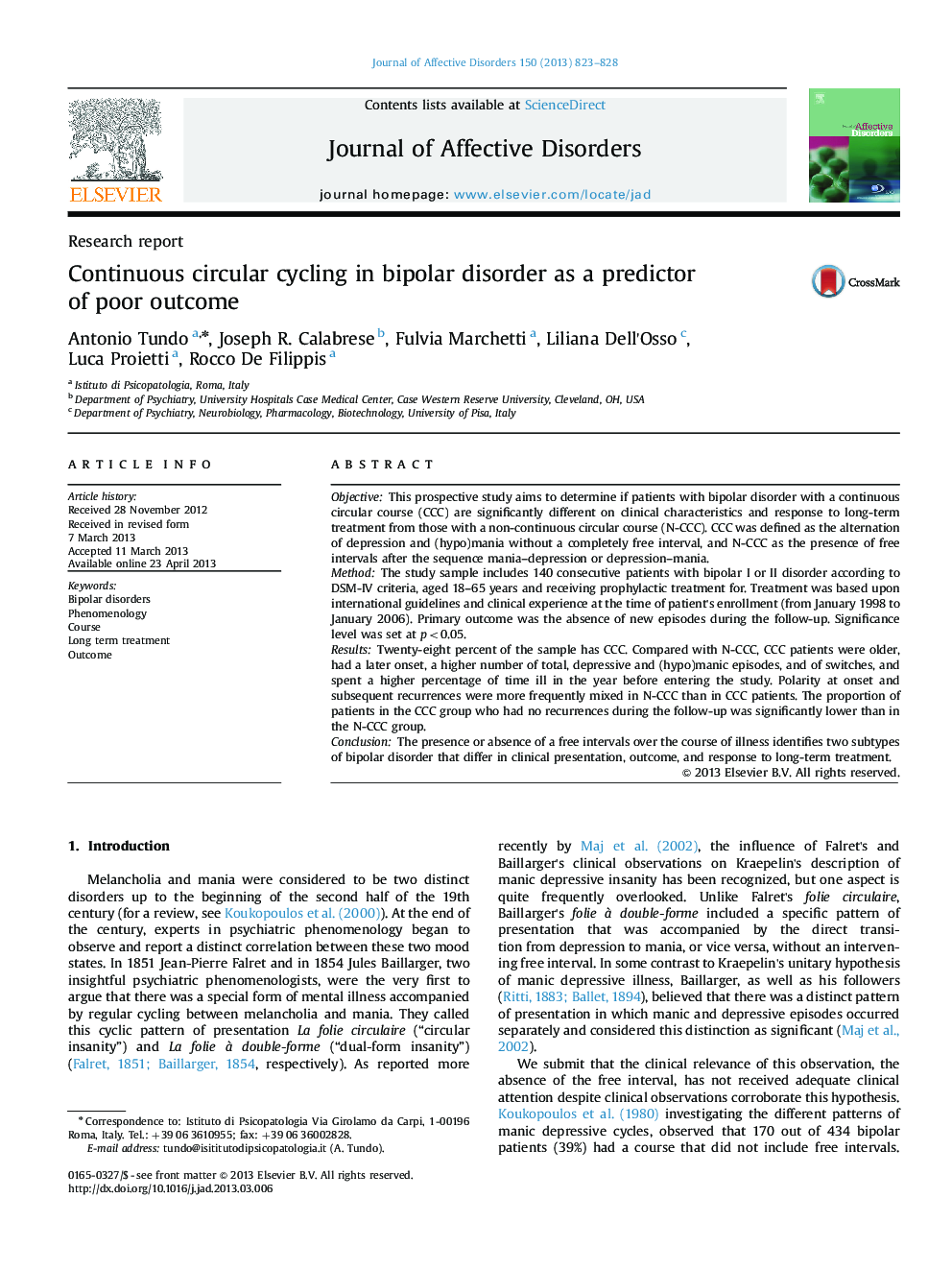| Article ID | Journal | Published Year | Pages | File Type |
|---|---|---|---|---|
| 6233593 | Journal of Affective Disorders | 2013 | 6 Pages |
ObjectiveThis prospective study aims to determine if patients with bipolar disorder with a continuous circular course (CCC) are significantly different on clinical characteristics and response to long-term treatment from those with a non-continuous circular course (N-CCC). CCC was defined as the alternation of depression and (hypo)mania without a completely free interval, and N-CCC as the presence of free intervals after the sequence mania-depression or depression-mania.MethodThe study sample includes 140 consecutive patients with bipolar I or II disorder according to DSM-IV criteria, aged 18-65 years and receiving prophylactic treatment for. Treatment was based upon international guidelines and clinical experience at the time of patient's enrollment (from January 1998 to January 2006). Primary outcome was the absence of new episodes during the follow-up. Significance level was set at p<0.05.ResultsTwenty-eight percent of the sample has CCC. Compared with N-CCC, CCC patients were older, had a later onset, a higher number of total, depressive and (hypo)manic episodes, and of switches, and spent a higher percentage of time ill in the year before entering the study. Polarity at onset and subsequent recurrences were more frequently mixed in N-CCC than in CCC patients. The proportion of patients in the CCC group who had no recurrences during the follow-up was significantly lower than in the N-CCC group.ConclusionThe presence or absence of a free intervals over the course of illness identifies two subtypes of bipolar disorder that differ in clinical presentation, outcome, and response to long-term treatment.
